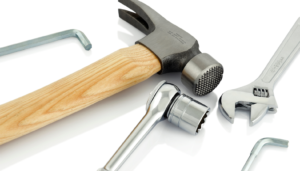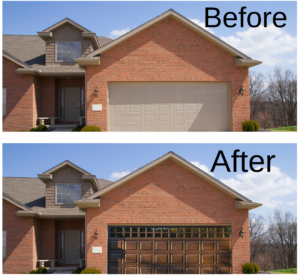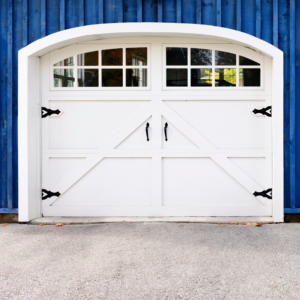Are you proactive when it comes to garage door maintenance? You are not the first person to ignore the garage door and opener, until something doesn’t work. It happens all the time. Your garage door is the largest and heaviest moving structure of your house. Do you use it as the main point of exit and entrance to your house several times a day? Over a period of one year, that means it opens and closes thousands of times!
There are dozens of moving parts on your door and opener. One broken part, if ignored, can lead to more broken parts and possibly disaster. A little preventative garage door maintenance, at least twice a year, can help reduce the chances of unwanted surprises.
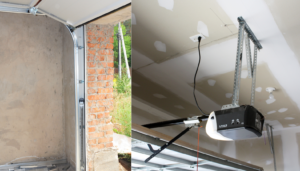
Before you call a technician:
Start with a thorough inspection of everything on the inside of the door. Look for anything that stands out as broken or different than similar items. Examine the springs (extension or torsion) to see if one looks different than the other. A stretched extension spring means the spring could break soon and the operation will be rough and noisy. A gap in a torsion spring means that you have a broken spring. Hinges are prone to crack and break in half when there is an uneven strain. Rollers can break or come out of the track. Check the condition of your cables to see if they are fraying or rubbing on any metal components like the tracks.
Go ahead and use a simple socket wrench to check and tighten all the nuts and screws. Do not over tighten as this might cause the hole to strip out. Now it’s time to lubricate. Find a silicone or white lithium lubricant designed for garage doors available at any hardware store. Spray it on the hinge joints, roller shafts & wheels, pulleys (extension springs) or torsion bearings and springs for a torsion system. After lubricating all the moving parts you might be surprised at how quiet your door just became.
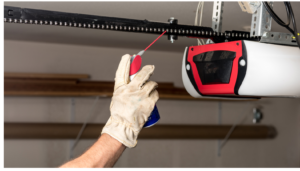
Now check the balance of your door by disconnecting it from your opener with the safety release. Manually raise and lower the door. With the door in the closed position, raise it about a quarter of the way. See if it stays put. Now raise it to halfway point and then three quarters of the way up. If the door starts heading to the ground or feels heavy in any of these positions, the springs have lost some of their tension and need to be adjusted or replaced by a skilled technician.
While moving the door up and down manually, did you hear any noises like; scraping, screeching, grinding or popping? If so, see if you can track down the source. Some of these sounds can be masked by the sound of your motorized opener. Likewise, if your door is very loud you might not hear any problems with your opener. With the door still disconnected from the opener, go ahead and run the opener. The opener should make a consistent sound while running without any popping or grinding sounds. A tube of lithium grease should be used to lubricate a screw drive or chain drive and will help make it run smoother and as quiet as possible.
Reconnect the safety release of your opener and check the limits of your opener. Most manufacturers suggest laying a piece of 2×4 wood on the floor at the door opening. If the “downforce” limit is set properly the door should go back up when you try closing the door and it makes contact with the wood. If needed check your owner’s manual for instructions specific to your brand or call a service company to reset the limits on your opener.
Once you have inspected the backside of the door and checked the operation of the opener, closely inspect the exterior of the door. Metal doors are prone to fatigue cracks, usually in the top center of the panels where the opener bracket attaches. Wooden doors are susceptible to water damage which can weaken the strength of the door. Lastly, remove any items stored near the tracks like brooms, rakes and other items that can interfere with the operation of the door and check the condition of the bottom seal and weather seal around the opening of your door.
Time to call a technician:
Garage door maintenance and inspections are fairly simple. If everything has been functioning properly, inspections and maintenance should keep it running. If you find a bigger problem like broken springs, frayed wires, or bent panels, be safe and call a professional.
![]()

